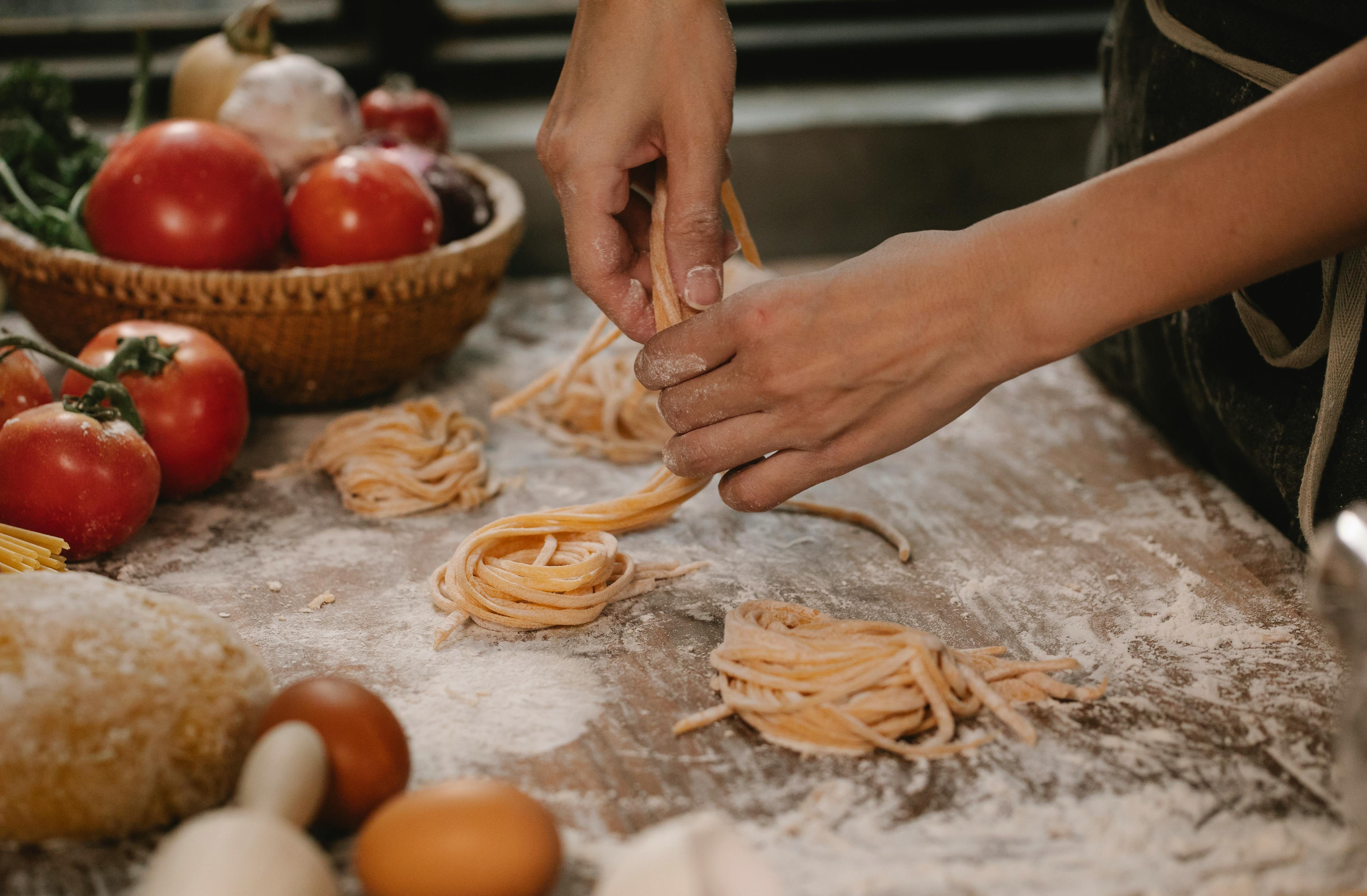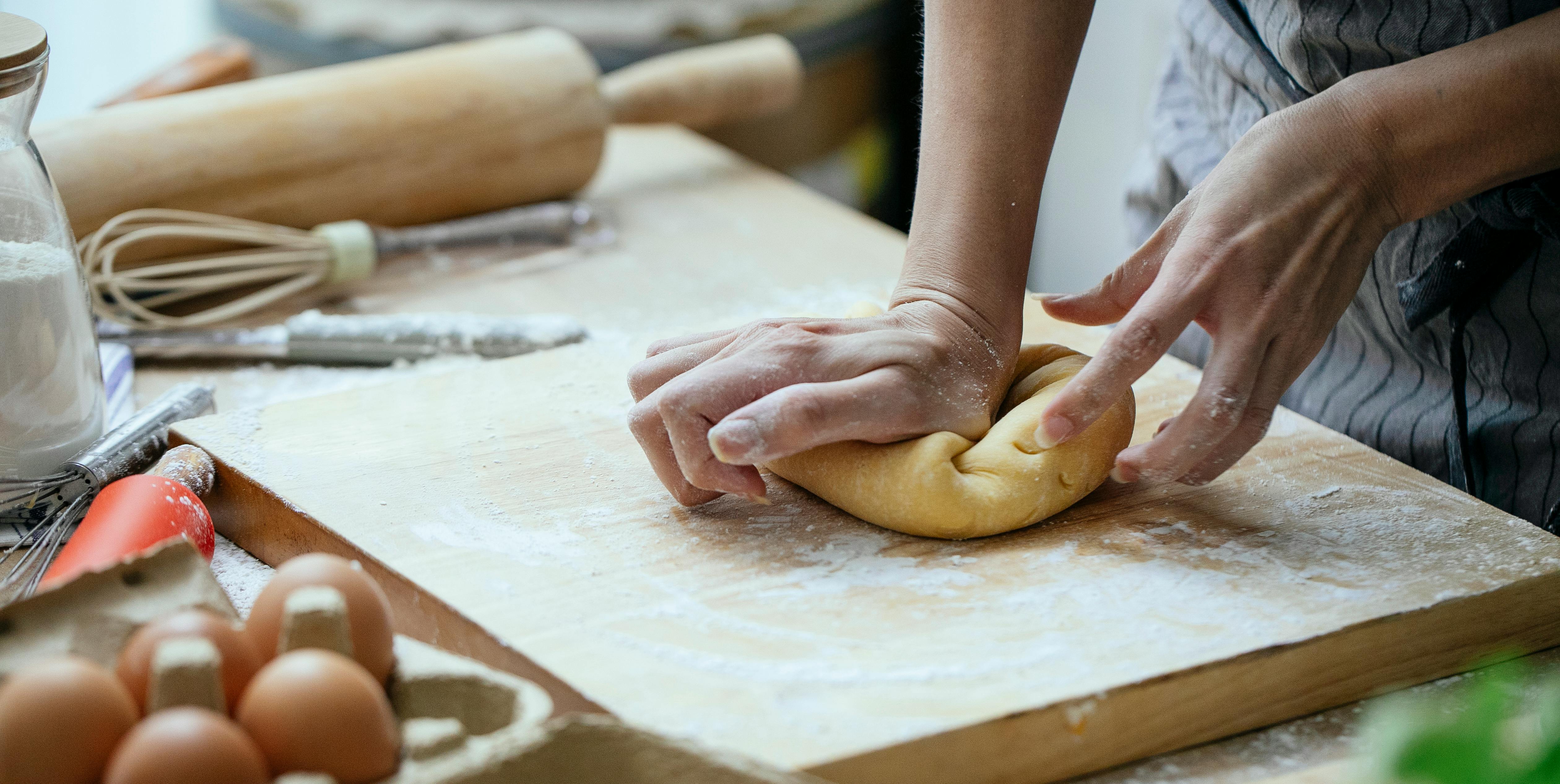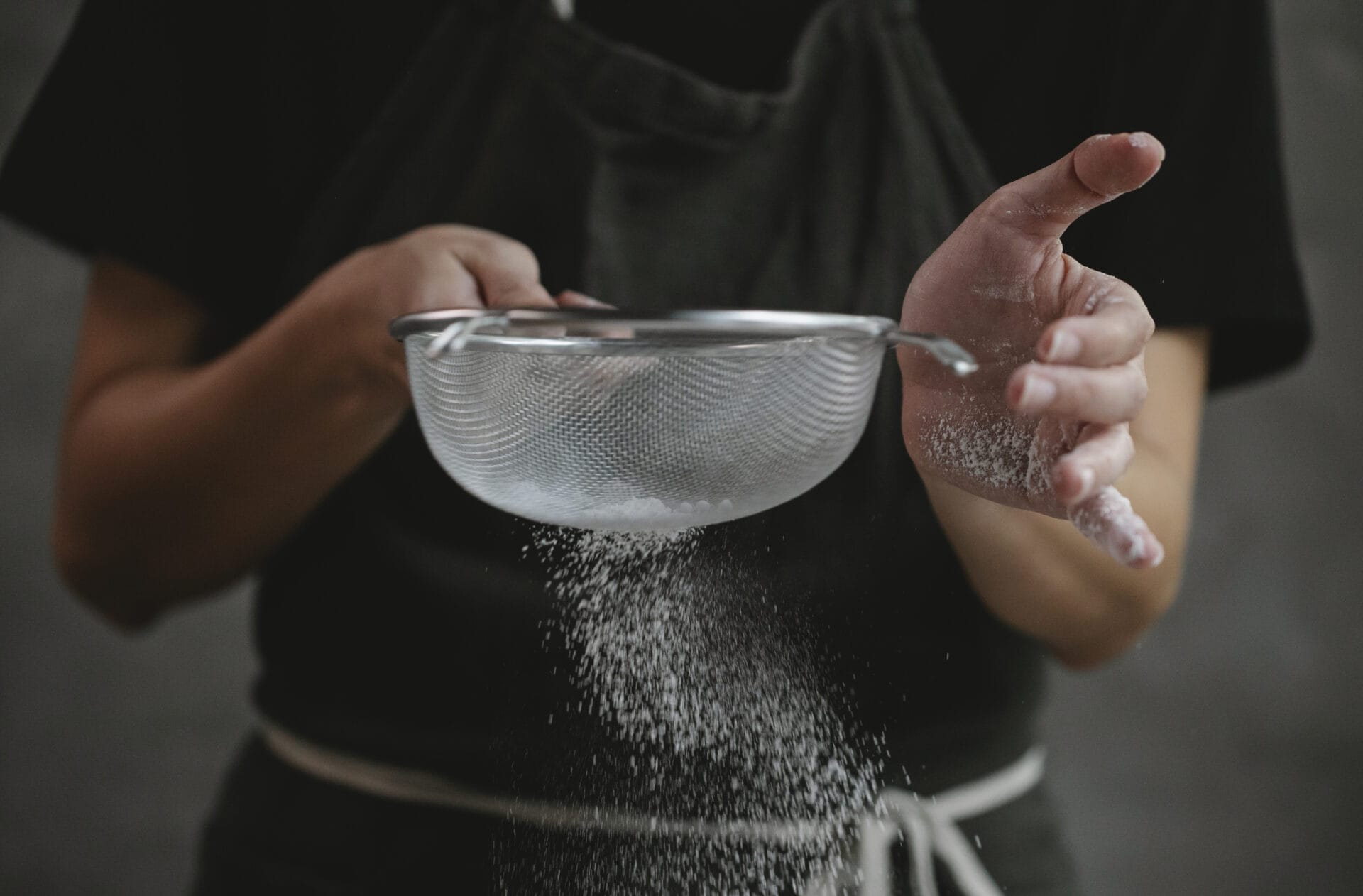Flour and water is a simple combination that can be used to make a variety of products. It is the basis of many recipes, from breads and pastries to dumplings and noodles. The flour and water mixture can also be used in art projects and other craft activities. The combination of flour and water is simple but can produce a wide variety of results depending on how it is mixed, kneaded, boiled or baked.Flour and Water are two basic ingredients often used together in baking. Flour is a powder made from ground grains, while water is a liquid. When mixed together, the flour and water form a dough or paste that can be used to make bread, cakes, and other baked goods.
Basic Ratio of Flour and Water
The basic ratio of flour and water when making dough is 1 part flour to 0.8 parts water. This ratio is usually used for regular wheat flour, but it may vary depending on the type of flour used and the desired texture of the dough. For instance, if a softer dough is desired, a higher ratio of water to flour can be used. On the other hand, if a stiffer dough is desired, then a lower ratio of water to flour can be used.
It is important to note that some recipes may call for different ratios depending on the intended use of the dough. For example, pizza dough often calls for more water than other types of doughs such as bread or pastry doughs. The same holds true for other types of baked goods like cakes and cookies, which may require different ratios depending on the type of flour used and desired texture or consistency.
In general, it’s best to start with a basic ratio when first learning how to make dough and then adjust it according to the desired result. Some experimentation may be necessary in order to find the perfect balance between flour and water, but once you find it you’ll have no trouble creating delicious baked goods every time!
All-Purpose Flour
All-purpose flour is the most commonly used type of flour. It is a blend of hard and soft wheat and is used for a variety of baking applications. It has a medium gluten content, which makes it well suited for cakes, cookies, muffins, and other baked goods. All-purpose flour can also be used in recipes that call for pastry flour or bread flour, though the texture of the resulting dish may be slightly different.
Bread Flour
Bread flour is made from hard wheat varieties that have higher protein content than all-purpose flour. It is usually milled to a finer texture and has a higher gluten content than all-purpose flour. Bread flour produces loaves with better structure and volume than all-purpose flour, making it an ideal choice for yeast breads. It can also be used in recipes that call for all-purpose or pastry flours, though the texture of the resulting dish may be slightly different.
Pastry Flour
Pastry flour is made from soft wheat varieties and is milled to a finer texture than all-purpose or bread flours. It has lower protein content than either of these types of flours and thus produces baked goods with a lighter, more tender crumb. Pastry flour is ideal for pie crusts, biscuits, and other baked goods requiring a light, delicate texture. It can also be used in recipes that call for all-purpose or bread flours, though the texture of the resulting dish may be slightly different.
Whole Wheat Flour
Whole wheat flour is made from milling whole grains including the bran and germ layers as well as the endosperm layer found in refined white flours. It has higher protein content than white flours but lower gluten content which produces heavier baked goods with less elasticity. Whole wheat flour can also be used in any recipe calling for white flours but results will vary based on how much whole wheat is substituted into the recipe.
Rye Flour
Rye flour is made from milling rye grains into powdery form. Rye has lower gluten content than wheat which results in dense loaves with less structure but greater flavor complexity. Rye can also be blended with other types of flours to produce lighter loaves with more flavor depth. Rye can also be used in recipes calling for white or whole wheat flours though results will vary depending on how much rye is substituted into the recipe.
Measuring Flour and Water
Measuring flour and water accurately is essential for successful baking. The two ingredients are measured differently depending on the recipe, so it’s important to know how to measure them correctly.
For measuring flour, it’s best to use a kitchen scale. This will give you an accurate measurement in grams or ounces, depending on the scale you are using. If you don’t have a scale, then you can measure the flour by spooning it into a measuring cup until it is heaping, then leveling it off with a knife.
To measure water, you will need to use either a liquid measuring cup or a graduated cylinder. A liquid measuring cup is used for larger amounts of water while the graduated cylinder is used for smaller amounts of water. When measuring with either of these tools, make sure that the water reaches the line on the cup or cylinder before pouring it into your mixing bowl.
It’s important to be precise when measuring these ingredients as too much of either can affect how your baked goods turn out. With a bit of practice and patience, you will soon become an expert at measuring flour and water!
The Benefits of Adding Water to Flour
Adding water to flour is an important step in the baking process. It helps to bind the ingredients together, resulting in a better texture and flavor. Additionally, it helps to create a smoother dough that is easier to work with. By adding water to flour, it can also help the dough rise more evenly and result in more consistent baking results.
One of the primary benefits of adding water to flour is that it increases the gluten content in the dough. Gluten helps to hold all of the ingredients together, resulting in a better finished product. It also helps with texture and flavor as well as giving the finished product a more even baking result.
Another advantage of adding water to flour is that it can help prevent sticking during baking. By adding moisture, it makes it easier for the dough to release from its surface when cooked, resulting in less waste and a lighter texture. Additionally, this will help create an even crust on the finished product and make slicing easier.
Finally, by adding water to flour you can create different consistencies and textures depending on what you are making. For example, if you are making pastry or pie crusts then you may need a drier dough so that it holds its shape when cooked. On the other hand, if you are making bread then you may need a wetter dough so that it rises properly during baking. By adjusting how much water is added you can achieve these different results easily.
In conclusion, adding water to flour has many benefits for baking and cooking projects. It helps increase gluten content for better binding and texture, prevents sticking during baking, and allows for different consistencies depending on what you are making. All these factors combined make adding water an essential part of any baking project or recipe!

How to Add Water to Flour?
Adding water to flour is an essential part of many recipes. The amount of water needed depends on the type of flour being used and the recipe. Generally, for all-purpose flour, add one cup of cold or warm water for every cup of flour. To ensure that the dough is not too dry or too wet, begin with a smaller amount of water and gradually add more until the desired consistency is achieved.
When mixing dry ingredients together, it’s important to mix them thoroughly before adding any liquid. This will ensure that all the ingredients are evenly distributed throughout the dough. Once all the dry ingredients are mixed, slowly pour in the water while stirring with a wooden spoon or spatula. Continue stirring until all the liquid has been incorporated into the mixture and there are no lumps of unincorporated flour.
If you find that your dough is too dry after adding the recommended amount of water, add a tablespoon at a time until you reach your desired consistency. If it’s too wet, add more flour one tablespoon at a time until it thickens up enough to handle and shape as necessary for your recipe.
When using yeast in your dough recipe, be sure to use warm or lukewarm water instead of cold as this will help activate the yeast quicker and result in a fluffier finished product. Additionally, if you’re using active dry yeast instead of instant yeast, be sure to dissolve it in some warm water before adding it to your dough mixture.
Adding water to flour can seem like an intimidating task but with practice and patience, you can master this essential baking technique!
How Much Liquid Does Flour Absorb?
Flour is an essential ingredient in many recipes and can absorb a surprising amount of liquid. The amount of liquid that flour absorbs depends on its type, the amount of gluten present, and the amount of moisture in the air. All-purpose flour is able to absorb up to three times its weight in liquid, while bread flour can absorb up to four times its weight. The more gluten present in the flour, the more liquid it can absorb. In addition, if there is a high level of humidity in the air, flour will also be able to absorb more liquid than it would otherwise.
The absorption rate also depends on how fine the flour has been milled. If it is finely ground, it will have more surface area with which to absorb liquids. On the other hand, if it is coarsely ground, it will have less surface area and therefore absorb less liquid. It is important to always measure out your ingredients carefully when baking with flour to ensure that you get the desired results.
When baking with wheat-based flours like all-purpose or bread flours, you need to be aware of how much liquid they will absorb and adjust accordingly. If too much liquid is added to a recipe that calls for such flours, it can lead to a dough or batter that is too wet and difficult to work with. On the other hand, if not enough liquid is added, then your dough or batter may be too dry and crumbly.
It’s important for bakers of any experience level to understand how much liquid different types of flour can absorb so that they can adjust their recipes accordingly. This knowledge will help ensure that your baked goods turn out perfectly every time!
Making Dough with Flour and Water
Making dough with flour and water is a simple process that requires just a few basic ingredients. The first step is to measure out the correct amounts of each ingredient. For a typical dough, this will include two cups of all-purpose flour and one cup of cold water. Once the ingredients are measured, they should be mixed together in a large bowl using either a wooden spoon or an electric mixer. It is important to mix the ingredients together until they are fully incorporated and form a smooth, uniform texture. If necessary, additional water can be added until the desired consistency is reached.
Once the dough has been mixed together, it should be kneaded on a lightly floured surface for five to ten minutes. During this time, it is important to continue to add small amounts of flour as needed in order to prevent the dough from sticking to the work surface and hands. Kneading helps to ensure that all of the ingredients are evenly distributed throughout the dough and that it has an elastic texture when finished.
Next, the dough should be covered with a damp cloth or plastic wrap and allowed to rest for 30 minutes at room temperature. This resting period allows for gluten development which results in an even more pliable texture once baked. After 30 minutes has elapsed, the dough can be used as desired for baking or other applications like pizza crusts or breads.
Making dough with flour and water is an easy process that requires few ingredients and minimal effort but yields great results each time! With just a few simple steps you can create delicious homemade breads, pizza crusts, pastries, and more!

Conclusion
Flour and water are two simple ingredients that can be combined to create a range of different products. Flour and water can be used to make doughs, batters and pastes, depending on the ratio of flour to water. They can also be combined with other ingredients, such as yeast or eggs, to make other products like breads, cakes and pastries. Flour and water is a versatile combination that can be used in a variety of ways in cooking.
Overall, flour and water have many uses in the kitchen. The ratio of flour to water will determine the type of dish that is made, from thick batters for pancakes or waffles, to thin doughs for pasta dishes. Knowing how to use this versatile combination within recipes will help you create delicious dishes with ease.

